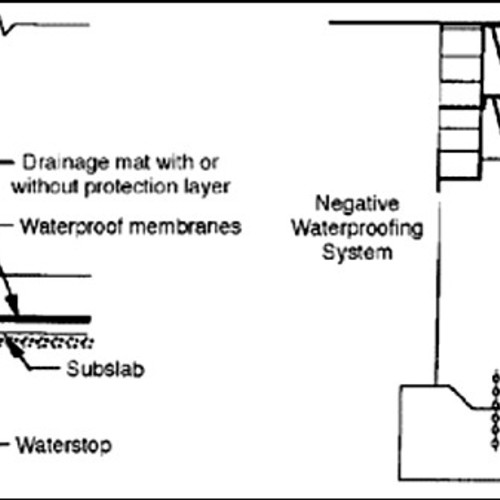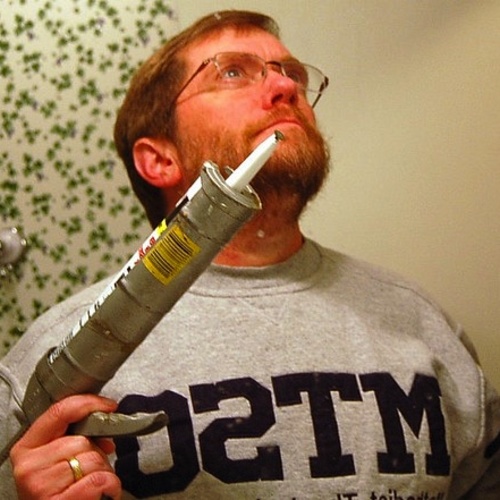
Ever have the smell of your fireplace inside your home? It’s not uncommon. Here’s a question I got from a reader named Rob last month:
We always have a smoke smell from our fireplace, more on some days than others. I had the chimney cleaned really well and the damper closed and it was fine. Then we just built our first fire since cleaning this weekend and the smokey smell is back. It has a metal damper in the firebox. I assume somehow negative pressure is forcing air back down the chimney especially when we run bathroom fans or the dryer I suspect.
What’s going on here?
Do you have negative pressure?
Rob suspects negative pressure is behind the fireplace smells in his home. First, when we talk about negative or positive pressure, we’re talking about the pressure difference between two places, usually indoors and outdoors. A negative pressure in the house means the indoor pressure is lower than the outdoor pressure, which can cause air to move from outdoors to indoors. (But that infiltrating air needs a pathway to do so.)
It’s quite easy to find out if a house is indeed running a negative pressure. All you need is a manometer, and the nice ones cost over $1000. You could get one with lower precision and spend less than $100. You also could use a magnehelic gauge for less than $100.
Or you could do it the easy way. With the house operating at what you suspect is a negative pressure, go to a door and open it just a bit. If you stand inside and put your face near the crack in the door, you’ll feel the air blowing on you if there’s a negative pressure. You can feel it with your fingers, too, and it works even better if you lick them (part of what Joe Lstiburek calls the “look, lick, and squirt test”). If you still can’t feel any air movement through that opening after you lick your fingers, you don’t have enough negative pressure to worry about, at least not right there.
The 3 causes of pressure differences in buildings
Three factors are responsible for pressure differences in buildings:
- Wind
- Stack effect
- Mechanical systems
Wind, of course, can create pressure differences between inside and outside. Hurricanes and tornadoes can induce pressure differences big enough to blow the roof off of a house. That’s why building codes require hurricane straps in high-wind areas.
Stack effect is a density-of-air phenomenon. Warm air is less dense and thus rises when surrounded by cold air. That can create some pretty big pressure differences, as you can see in the video below.
And then there’s the wild card of mechanical systems. Exhaust fans in your bathrooms and kitchen, of course, will induce some negative pressure. The more airtight the house, the bigger that negative pressure will be. Let’s put some numbers to that idea.
My house currently has a blower-door test result of 5200 cu. ft. per minute at 50 Pascals of pressure difference (5200 cfm50). That’s pretty high, but it’s a 3800-sq.-ft. house built in 1961, and it was close to 7000 when I bought it last May. But let’s get back to the main point. With an air-leakage rate of 5200 cfm50, my house won’t show much of a negative pressure if I turn on a 50-cfm bath fan. It takes 5200 cfm to induce a 50-Pa pressure difference, so 50 cfm will barely register.
At the other extreme, some Passive House projects have air-leakage rates of 100 cfm50, or even lower. Two 50-cfm bath fans would induce a 50-Pa pressure difference across that house. That’s a lot of negative pressure, which is why Passive House designers and builders worry so much about the mechanical systems they use.
Other mechanical systems that can create pressure differences are clothes dryers, heating and air-conditioning ducts, powered attic ventilators, portable air conditioners, and supply-only ventilation systems. Atmospheric combustion appliances draw in air from the space around the appliance and send it up the flue, but that’s generally small compared to the pressure differences created by the others I listed.
Finding the source of negative pressure
If you suspect negative pressure is causing problems, the first thing to do is figure out which of the three causes of pressure difference is most likely to blame. Does the fireplace smell (or whatever symptom you notice) occur only when it’s windy outside? You can’t stop the wind, but you can see about eliminating the pathways for air to move.
Does it happen only when it’s cold? If so, the stack effect may be to blame because it increases with temperature difference and most places have bigger temperature differences in winter. But you also run the heat when it’s cold, so it could be unbalanced duct leakage.
To determine if mechanical systems are inducing a significant negative pressure, turn on the one(s) you suspect and do the cracked-door test again. Then turn them off and see if there’s a difference. That also works for pressures induced by unbalanced duct leakage. Do the door test with the heating system on and then again with it off.
If you have the fireplace smell in your house like Rob does, finding the source of the negative pressure and reducing it should solve the problem. You don’t want to stop using bath fans, range hoods, and clothes dryers, though, so keeping the damper closed when the fireplace isn’t being used should help.
Remember: You need both a pressure difference and a pathway to have air movement, so eliminate one or the other or both and you solve the problem.
–Allison Bailes of Decatur, Georgia, is a speaker, writer, building science consultant, and the author of the Energy Vanguard Blog. You can follow him on Twitter at @EnergyVanguard. Photo courtesy of the author.
Weekly Newsletter
Get building science and energy efficiency advice, plus special offers, in your inbox.















13 Comments
> can create pressure differences between inside and outside
And all can create pressure differences between inside and inside. Which can have a significant effect on HVAC balance.
It's not all bad. A little positive house pressure above 85F and negative below 40F reduces wall/ceiling moisture. Pressure can also help with air quality, odor and radon.
The free "SeeStack" software helps visualize some of this.
I am new to this do you have a link to the software
Took this picture about 40 years ago before I knew anything about BS. Just liked the building but it is a nice example of stack effect.
Good Article.
Pressure difference to where outside? When there's wind or even a very slight breeze there can be a significant difference between the outside pressure on the windward side and the leeward side?
While there are problems with neg pressure there are other problems with positive pressure. In winter driving warm moist indoor air through wall and roof assemblies could be a significant problem? So we need to find a way to either perfectly seal every wall and roof or we need to find a way to always maintain a minimal pressure differential inside to outside on each?
If the problem is stack effect then what is the solution?
> Pressure difference to where outside?
In the case of a fireplace, it's the pressure differential between the top of the chimney (outside) and the fireplace opening (inside). Agreed, wind can effect both.
You can counteract stack effect pressure with fans, but the CFM needed will often be excessive. Air sealing will reduce airflow, but won't change stack effect pressure.
Thanks. Stack effect can seemingly create very considerable pressure against the roof in some homes/buildings, particularly w/ a cathedral ceiling, and so push warm moist indoor air through any and all cracks including between conjoined trusses that are very difficult to air seal due to expansion/contraction. The result could be rotting sheathing.
I wonder if it almost wouldn't be better to have some way for this pressure to escape? From a pure energy efficiency standpoint that hurts but overall building science and structure longevity may improve.
More: https://www.greenbuildingadvisor.com/question/air-seal-conjoined-trusses
I guess the question would be: In a well air-sealed house where the stack effect is minimized, are we seeing the problems you suggest might occur? Do we actually see damage that can be attributed to the stack effect in the absence of obvious air-sealing problems? And we aren't just talking about the roof, but just as importantly the foundation and lower parts of the structure, as a pressure differential can't occur without there being an inlet for the air to enter.
Negativity creates an environment that goes against the Human condition and health effects. A positive environment adds protection to the human condition along with better health effects. A controlled indoor environment will include the four points for Human comfort, Temperature, Humidity, air movement, and air cleanliness. I would add to this positive air Pressure. Example, on a high pressure day your body enjoys less inflammation pushing out to your nerves and joints. This allows you to work more easily. Low pressure effects allow the inflammation in your body to come out and you feel the aches and pains plus some people experience sinus headaches.
Hi Paul.
Those are interesting considerations. Can you point us to any research on the effects of air pressure on the body in an indoor environment?
Does anyone have any experience with the $30-35 digital manometers available on Amazon? I'm seeing claimed resolution (which is not to say accuracy) of 0.01 kPA which would seem to be plenty for this kind of application.
I have a similar question. I'm trying to determine negative pressure situations from room to room without having to setup the blower door. Trying to use a Testo 510 and I'm not getting readings that amount to anything conclusive - in fact, usually displaying 0. Leaving me wondering if its the method, the equipment, the environment, or the nitwit conducting the test.
I would want at least .1 pascal resolution to measure pressures in the 1 pascal range. Like a "testo 521-3"
Florida requires 2.5 pascals room-to-room. I wonder what people there are using?
I would recommend getting a better resolution than 10 Pa. I just took a look on ebay and found a magnehlic 0.25 inch water model for $40 with shipping, which has divisions that are about 1 Pa, and a full-scale reading a little over 50 Pa.
Log in or create an account to post a comment.
Sign up Log in